Is it just me, or does it seem like all of the talk about fat-loss for the over 40 population is all about pills, powders, and potions? Why doesn’t anybody want to talk about good old-fashioned training and proper, balanced eating? It’s much more common to see remedies from the supplement industry making headlines, versus taking the challenge into your own hands and working toward a more practical and proven solution.
Is it just me, or does it seem like all of the talk about fat-loss for the over 40 population is all about pills, powders, and potions? Why doesn’t anybody want to talk about good old-fashioned training and proper, balanced eating? It’s much more common to see remedies from the supplement industry making headlines, versus taking the challenge into your own hands and working toward a more practical and proven solution.
The fact is that training your body will have direct and immediate effects on not only your health, but also the aesthetics of your physique. More muscularity, lower body fat levels, and a general sense of athleticism will show through when proper training is carried out. It’s much like a student in school; the more they study and pay attention in class the better their grade.
No magic tricks, no hacks, just hard work and discipline.
Fat-loss for the over 40 crowd isn’t any different. Yes, stress levels, responsibilities, nutrition, sleep quality, and a host of other factors can and will affect outcomes, but those are factors at any age. It’s time to suck it up, make better choices and get busy.
Plan to Succeed
You aren’t the same person at 40 (or above) as you were at 20. Job responsibilities, marriage, kids, social obligations, and the general time crunch of modern life all tug at every ounce of your being, every waking moment. Since you can’t (and shouldn’t) shirk your family obligations, you must learn to manipulate stress levels, improve time management, and increase self-discipline. All it takes is a little planning. Below are some guidelines to make sure you get the most from every hectic day:
- Schedule like a beast: With a full agenda every day, you will have to plan. There’s no way around it. If the only time you have to train is the morning, do it. Set your alarm, get up and get after it. Stick to your schedule until it becomes an integral part of your day, and becomes second nature.
- Choose and charge: When it comes to picking a program, choose one and get going. Don’t become a victim of analysis paralysis, researching every single program and piece of advice on the internet. That is a subconscious stalling tactic. Pick one, and then squeeze everything you possibly can out of it and don’t look back. I’ll provide a sample program later in this article.
- Make every second count: The gym, even your home gym, isn’t a social hangout. It’s a place to get your work done. Be friendly, but be busy. If you have a finite amount of time to train, then adopt some new best friends such as supersets, compound sets, and circuits. These will allow you to be as efficient as possible without sitting around staring at your phone to kill time.
- Track like the NSA: How can you build a house without a blueprint? You need a plan and a way to track your progress. I recommend a paper notebook. Yes, it sounds old-fashioned, but tracking on your phone tempts distraction too much. Keep track of reps, sets, weights, how you felt that day, and anything else you feel is important. Not every day will be a homerun, but you will start to see trends in your progress that you can quickly adjust if necessary.
- Endure the hard stuff: When faced with a setback or hardship some gym-goers simply throw in the towel and give up. The trick is to keep at it, endure, and outlast the setback. Eventually you will succeed. If you plateau in any aspect of your progress, make a pledge to stick with it, no matter how long it takes. The body isn’t a machine that operates under exact parameters. It will ebb and flow. You just need to stay the course.
- Listen to your body: There is a huge difference between good pain and bad pain. Lungs and muscles burning, fatigue during training, and your will being challenged are all good signs. Sharp, stinging, aches and pains are more serious. Know when to dial it back. Don’t wimp out if you’re just feeling tired or unmotivated, but trust your body when it says to take an extra rest day or not go as hard.
- Don’t get bored: Having goals is great. We often imagine the joy once we achieve what we set out to do. But the process should be enjoyable as well. If it isn’t, then either find a way to make it fun or find another way altogether. This isn’t to say that training should be a cakewalk, but joy can and should be derived from challenge. Look to the challenge for inspiration, motivation and the desire to succeed. Once you do that you’ll never be at risk of becoming bored or disinterested.
Ditch the Treadmill
The challenge of fitness over 40 isn’t just the limited number of hours in the day. Chances are, you may not be in the type of shape you once were. At 20, you could go to the gym on little sleep and less than optimal eating habits and just kill it. Now you may need a kick in the pants just to make it to the gym. Plus, your body may not respond like it used to either.
You don’t have to resign yourself to long, boring hours slogging away on the treadmill. Fat-loss training is more about programming your body to be a fat-burning machine, rather than simply trying to burn some calories during training. The key is a plan that will stimulate fat loss and set your metabolism in motion, so it can become more efficient and effective at processing nutrient-rich foods for the long term. In other words, don’t think of just burning fat in the gym, think of revving your metabolism to work as a calorie-burning furnace throughout the entire day.
Yes, traditional cardiovascular training is beneficial. It’s healthy for your heart and circulatory system, but it’s only a small piece of the puzzle. You can get fat-burning effects from almost any mode of training: intervals, resistance, specialized conditioning, etc. Being chained to the treadmill is not required.
Diet Changes After 40
Diet plays a pivotal role in the business of getting lean. What is great training without optimal food intake to recover, grow muscle, and burn fat? It’s like having an exotic sports car and filling it up with low-grade, cheap gas. Your body is no different. So how does the diet for the over-40 trainee differ from their younger self?
(Source: Precision CrossFit)
The short answer is, not much. But changes can and do occur. A carb is still a carb, but you may need to adjust a few things in order to compensate for things like a lessened recovery ability and metabolic rate. The good news is, you aren’t the average sedentary Joe. The fact that you train and eat right will go miles toward keeping you on the right side of the curve for your age. Supplement companies all clamor to sell you products promising a healthier, more youthful existence. But the reality is that nothing will affect your overall health and wellbeing more than proper eating and exercise.
I’m not going to spell out an exact eating plan, as everyone will have their own particular requirements. But I will list a few general guidelines to help you devise your own plan. These are generalized suggestions, and may not be suited for every individual over 40, but they are the key points that I’ve found helpful throughout my time north of 40:
- Watch those carbs: You can’t scarf down an entire pizza and a six pack like you did in your college days, and still see your own six pack. Watch carbs, especially added sugars, and focus on whole grain, complex varieties such as rice, oats, potatoes, and plenty of veggies.
- Fat can be a great ally: Healthy fats work wonders when carbs are on the low side. Healthy fats such as olive oil, avocado, and nuts and nut butters will give you energy for training. But since each gram contains nine calories (more than twice that of carbs and protein), it’s easy to overindulge. Increase healthy fats only when going low on carbs.
- Protein still rules: Protein was king 20 years ago, and not much has changed. The only difference is that you need to space out your intake, since you may not have the gut to eat big all the time. Eat a moderate portion and allow it to digest for a while before getting more.
- Keep up that frequency: Smaller meals tend to be easier on your digestive system, and that will mean more frequent eating. Additionally, you’ll feel lighter on your feet after a meal, instead of lying on the couch loosening your belt.
- Keep it realistic: The days of massive cheat meals have probably passed. No matter what you see on so-and-so’s Instagram, the average 40-plus lifter can’t get away with piles of pancakes and buckets of eggs and bacon. Stay the course throughout the week. Treat yourself to a small to moderate cheat meal, but keep it sane.
Train to Keep Your Muscle
Once your eating is on point, training becomes the catalyst for change. “Abs are made in the kitchen” has been beat to death, but it doesn’t mean you can overlook training. Your training is the spark and the reason for your body to shift into a fat-burning machine. Diets are great, but some of the weight lost will be muscle tissue. You need to give your body a reason to burn fat while holding onto all that hard-earned muscle you built. Here are a few specifics to keep in mind when building an effective fat-burning, muscle-building program.
- Reps: This isn’t some high-rep blitz. Muscle tissue burns calories. The more you have, the more calories you’ll burn at rest. Keep your reps in the lower range to build muscle and strength.
- Rest: Rest between sets should be kept at a minimum. Keep a close eye on the clock, as this will challenge not only your stamina but also your will to drive forward. A win-win.
- Compound exercises: If you were to isolate every area of the body, your training sessions would last for hours every day. Multi-joint, compound movements are best for working the absolute most muscle with each exercise.
- Supersets: Utilize supersets as much as possible. Train opposing muscles back-to-back, such as chest and back. This will not only make you work harder, but will also save a ton of time. For example, between sets of bench presses you could perform sets of rows.
- Circuits: A circuit is just a long string of supersets. Circuits allow for constant motion while training through a series of exercises to help facilitate metabolic conditioning.
- Progression: Look to add weight to the bar each month. There’s no reason you shouldn’t be looking to get stronger after 40, even if your overall goal is fat loss.
Workouts for Fat Loss Over 40
The following training program is designed specifically to burn fat and build muscle. It’s structured for efficiency and effectiveness, so you’re not wasting a ton of time meandering in the gym, staring at your phone, or chatting with your buddy too much.
- Aim to train for three non-consecutive days per week, such as Monday, Wednesday, and Friday. You will also have an optional fourth day to place wherever desired. Each workout is performed once per week.
- Pay close attention to warm-ups sets and rest periods.
- Feel free to switch around exercises or replace some with your favorites. Not everyone is built the same way.
- Always practice textbook form on every exercise.
- Keep track of your progress. Get a notebook and jot down weights, sets and reps for each workout. Refer back to it prior to each session.
- And as always, leave your ego at the door.
Day 1
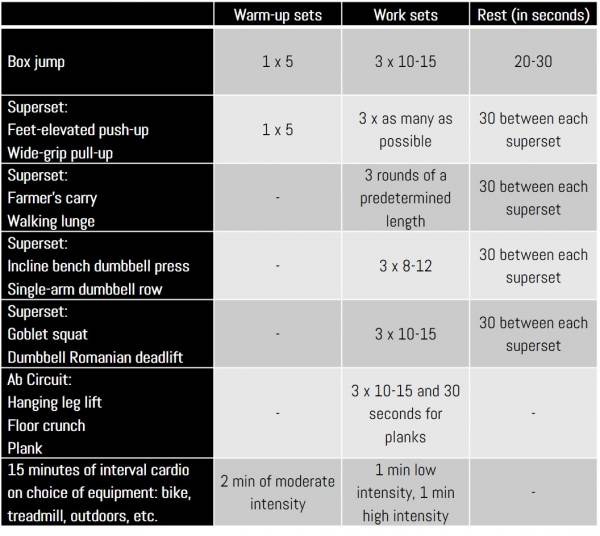
Day 2
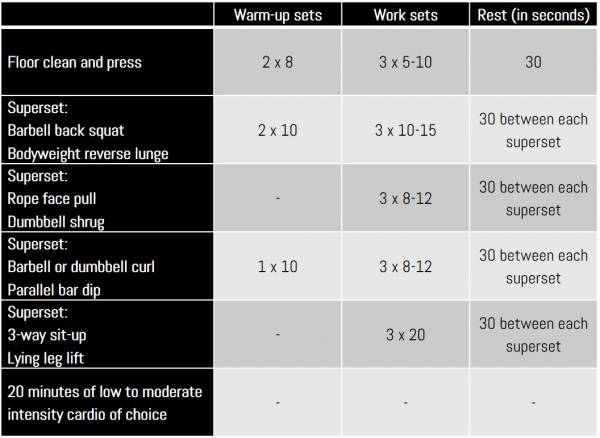
Day 3
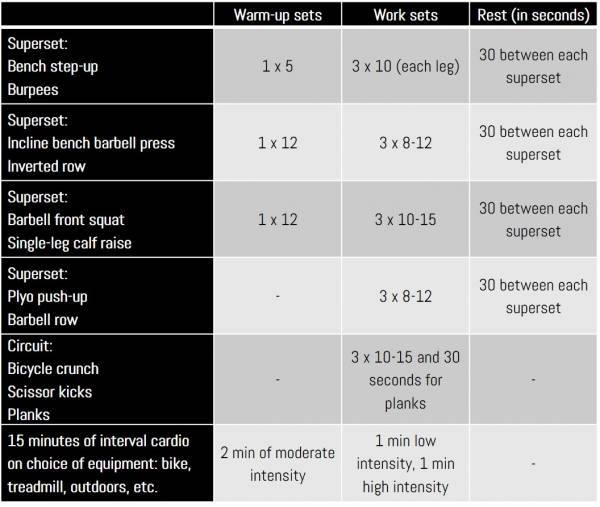
Day 4 (Optional)
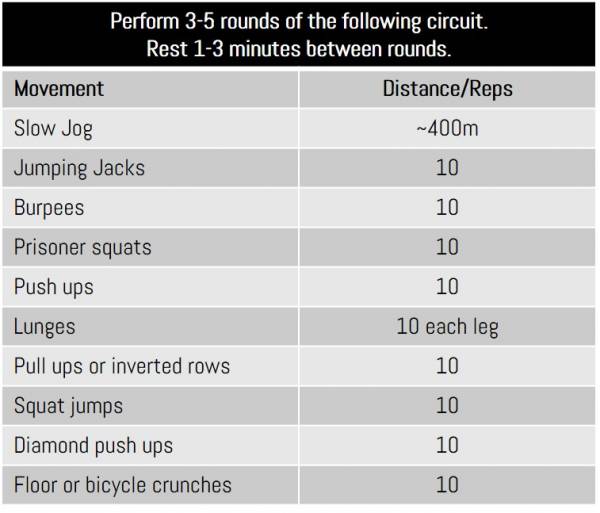
Click here for a printable PDF of this workout plan.
Life Doesn’t End at 40
Just because you’re north of 40 doesn’t mean your fitness is a lost cause. Embrace the challenge and believe it’s never too late to get started. This program is the perfect launching point for newbies, or for those looking to up the ante on their fat-loss goals. Strip some unwanted weight, build some muscle, and enter a new phase of your healthy lifestyle.
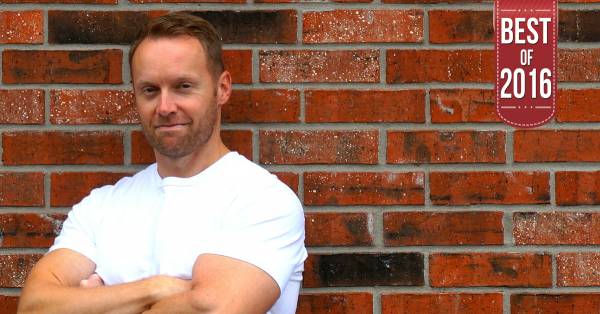
As you get older, make sure you get wiser about your training:






